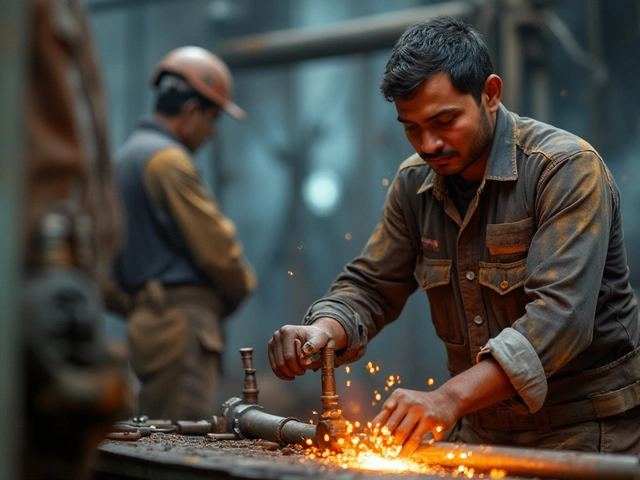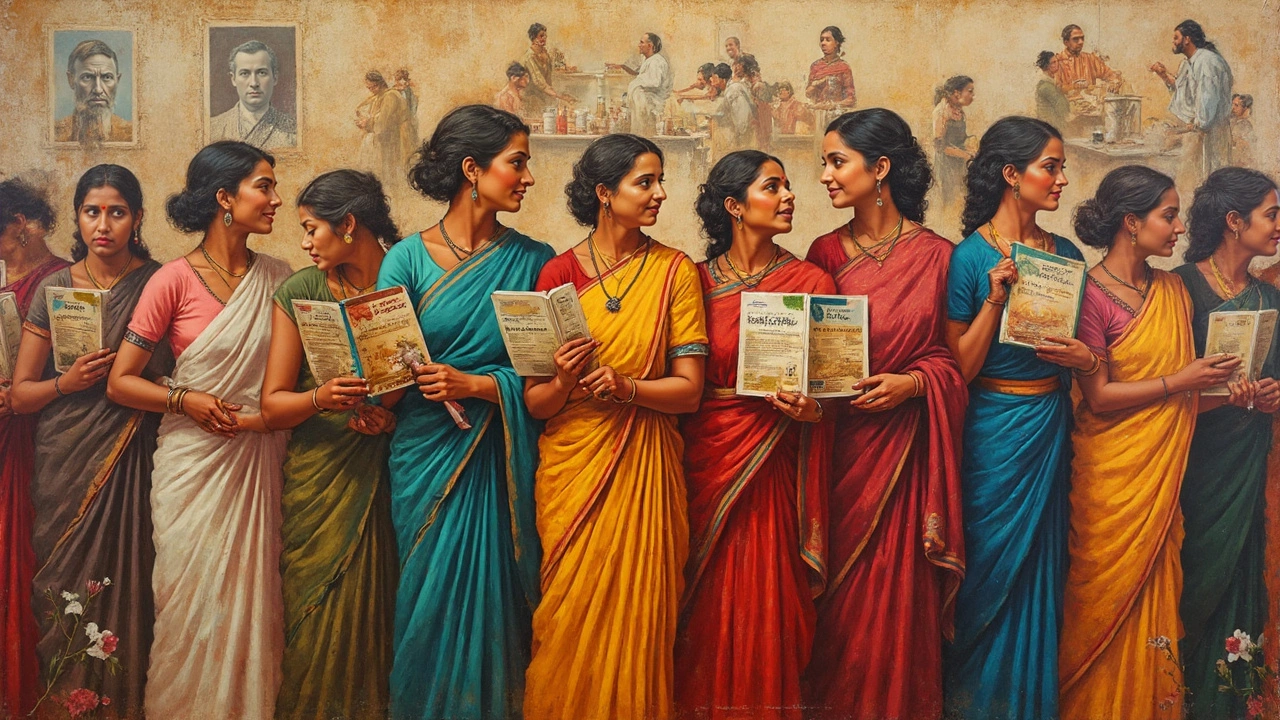Vocational Training for Women: Who Pushed for Change?
If you ever wondered why your daughter can learn welding or your sister can ace coding bootcamp, it’s not by accident. A couple of generations back, the job world tried hard to keep women in just kitchens and typing pools, locking them out of anything hands-on or well-paid. It took a few gutsy folks raising their voices and refusing to back down to even get the ball rolling on vocational training for women.
What drove these early advocates? A lot of them were just tired of seeing smart, skilled women stuck in dead-end jobs or teaching themselves skills at home with no recognition. Some were teachers, others were workers, and a bunch belonged to groups fighting for women’s rights. They demanded actual pathways for women to train, get certified, and step into trades or new industries—jobs that offered more than a paycheck, but a future.
- The Early Push for Women’s Skills
- Trailblazers Who Made It Happen
- Groups and Movements Behind the Scenes
- Why Their Fight Still Matters
The Early Push for Women’s Skills
People often forget just how hard women had to fight for a real shot at learning practical work skills. Back in the late 1800s and early 1900s, schools mainly offered home economics for girls—basically sewing and cooking, with zero mention of higher-paid trades. But things started to shift, especially with the Industrial Revolution humming and cities growing fast. Suddenly, factories and offices needed hands-on workers, and women wanted in.
One of the first gamechangers was Emma Hart Willard, who set up the Troy Female Seminary in 1821. It didn’t just focus on the arts—the school added math, science, and even some practical courses. Another big name: Mary Lyon. She founded Mount Holyoke in 1837 and opened the doors to more ambitious studies for women. Both helped set the stage for the idea that women deserved more than just ‘lady’ skills.
The real spark for vocational training for women came with activists like Jane Addams, the Chicago social reformer. In 1889, she co-founded Hull House, a settlement that taught immigrant women basic trades, childcare, and English. The point wasn’t just literacy—it was about making women employable outside the home, especially in the growing U.S. cities.
If you want to see how slow progress was, check out this data from the early 1900s:
| Year | % of Women in Workforce | Formal Training Offered |
|---|---|---|
| 1900 | 18% | Mostly domestic work |
| 1920 | 21% | Secretarial, teaching, some factory skills |
| 1940 | 25% | Wartime trades, factory, limited technical courses |
Big city schools in places like Boston and New York started experimenting in the early 1900s with classes for women in bookkeeping, typing, and nursing, chasing whatever jobs were opening up. But for decades, the real push came from small neighborhood organizations, not government or schools. All these efforts finally got mainstream attention during World War II, when the country needed every hand it could get—male or female. That’s when Rosie the Riveter waltzed into history, but the groundwork was already set by decades of smaller, quieter battles.
Trailblazers Who Made It Happen
Vocational training for women didn’t just pop up overnight. Real people rolled up their sleeves. One name that always comes to mind is Mary Lyon. Back in the 1830s, she started the Mount Holyoke Female Seminary, one of the first places in the U.S. where women learned hands-on science and practical subjects. She wasn’t messing around—she wanted women to be ready for work, not just marriage.
Fast forward, and you’ve got pioneers like Jane Addams. She built Hull House in Chicago in 1889, where women could learn everything from plumbing to teaching. Hull House didn’t just teach skills; it trained women for real jobs that actually paid the bills. Here’s a quick list of serious changemakers:
- Jane Addams – Hull House founder, huge on job training for working-class women.
- Frances Perkins – First female U.S. Cabinet member; she pushed vocational programs into New Deal policies in the 1930s.
- Booker T. Washington – Started as an advocate for Black men’s trade schools, but his wife, Margaret Murray Washington, made sure Black women got in on the action at Tuskegee Institute’s women’s programs.
Women’s groups also made a big dent. The YWCA started offering job training in the late 1800s, giving city girls a real shot at employment beyond domestic service. After World War II, the Women’s Bureau (a government office founded in 1920) published guides showing which trades would actually hire women—and helped schools shift their programs.
Want numbers? During the 1940s “Rosie the Riveter” boom, more than 6 million American women entered trades and factory jobs. The proof? Stats from that wild decade:
| Year | Women in Trades (USA) |
|---|---|
| 1930 | Just over 2 million |
| 1945 | More than 8 million |
This all laid the groundwork so that today, when you look up vocational training for women, there’s a ton of options—apprenticeships, bootcamps, workshop gigs—it all started with those early trailblazers calling out the barriers and refusing to take no for an answer.

Groups and Movements Behind the Scenes
Way before it was common to see women in workshops or coding classes, a handful of gutsy organizations started making noise about vocational training for women. It wasn’t just chatter online (nobody had WiFi back then). These groups rolled up their sleeves and got results.
The YWCA (Young Women’s Christian Association) was a total game-changer. As early as the 1880s in the U.S. and U.K., the YWCA set up training rooms for jobs like sewing, typewriting, or bookkeeping. This wasn’t charity—their model helped thousands of women earn real wages and even manage businesses. Fast forward to WWII: groups like the Women’s Voluntary Services in Britain openly recruited and trained women in everything from mechanics to air raid services, out of pure need when men went to war.
In India, the Women’s Indian Association (founded in 1917) started night schools and job programs for girls, targeting entire communities where girls’ schooling wasn’t normal, let alone job training. That same wave hit Europe too, where trade unions like the UK’s National Federation of Women Workers made sure bosses couldn’t refuse women a shot at apprenticeships or factory training because of their gender.
- YWCA: Pioneered structured job-training for women in the West
- Women’s Voluntary Services: Taught technical and emergency skills during wartime
- Women’s Indian Association: Opened paid skill-building to girls in underserved areas
- Trade unions: Fought for union access and fair training standards for women
This work took guts, but also brains—by 1944, U.S. government stats showed women made up about 35% of the workforce, thanks mostly to these organized pushes. Today, studies say countries with vocational programs for women see up to a 20% boost in women’s lifetime earnings over those that don’t have them. Here’s some quick data that speaks volumes:
| Group/Movement | Key Years | Impact (Women Trained/Jobs Created) |
|---|---|---|
| YWCA | 1880–1950s | Estimated 2 million globally by 1950 |
| Women’s Voluntary Services | 1938–1945 | Over 1 million UK women trained |
| Women’s Indian Association | 1917–1940s | 35,000+ trained in urban/rural India |
| National Federation of Women Workers | 1906–1921 | Helped secure training rights in dozens of key industries |
No single group had all the answers, but it’s clear that without these organized efforts, practical training for women wouldn’t have gotten off the ground—or into the history books. It’s a good reminder that behind every hands-on course or apprenticeship today, there’s a backstory of serious teamwork.
Why Their Fight Still Matters
The push for vocational training for women didn’t just give a boost to a couple of early trailblazers—it totally changed the job scene for millions. Yet, the world still isn’t perfectly equal. As of 2024, women are still seriously underrepresented in some skilled trades. In the U.S., women only make up about 11% of all construction jobs, and roles like electricians or mechanics hover around the 2-3% mark. That's why it matters who fought for these opportunities—because the fight isn’t over.
When you look at who gets paid more or has more stable jobs, the link between hands-on training and better job prospects is clear. In fact, according to the National Center for Education Statistics, women who complete vocational programs are almost twice as likely to find full-time work within six months compared to those with only high school diplomas. Industries hungry for new talent, like health tech and advanced manufacturing, are still desperate for skilled female workers. The push for equal training now keeps those doors open for the next generation—including our own kids.
| Field | % of Women | Median Annual Wage (USD) |
|---|---|---|
| Healthcare Support | 86% | $33,000 |
| Construction Trades | 11% | $48,000 |
| IT & Computing | 27% | $97,430 |
The pioneers also taught us to keep pushing for real change, not just lip service. You can make a difference in your own backyard too, whether you’re a parent, a teacher, or helping younger relatives. Here are some ways to keep the ball rolling:
- Support programs in your area that encourage girls and women to try out skilled trades or STEM.
- Challenge outdated ideas about "men’s" and "women’s" work—especially with kids and teens.
- Share real stories of successful women in hands-on jobs. It makes a difference when girls see role models who look like them.
The folks who fought for these training programs handed us the tools. Our job? Make sure those doors stay wide open and even smash through a few more walls if we have to.





